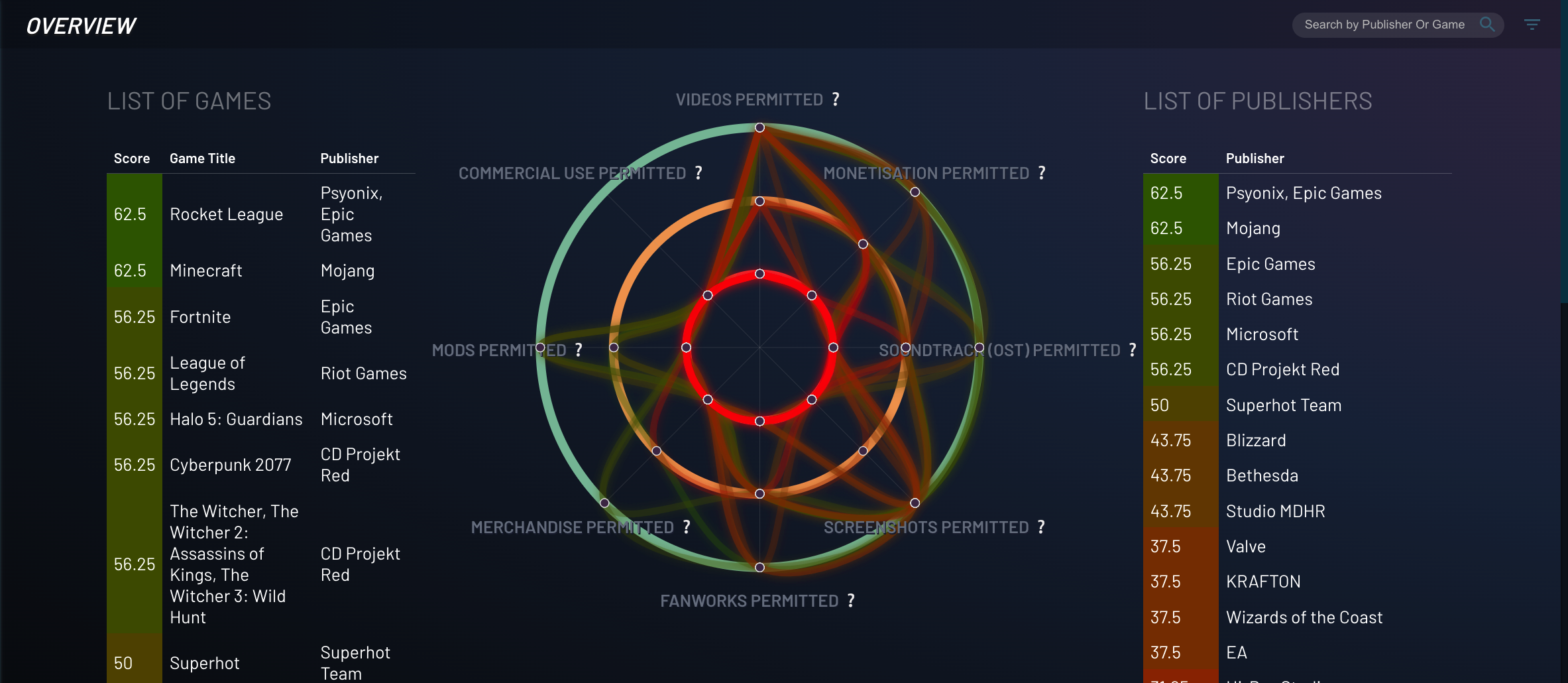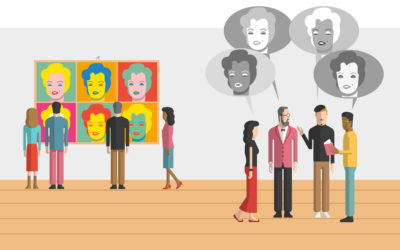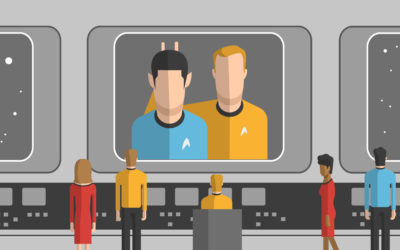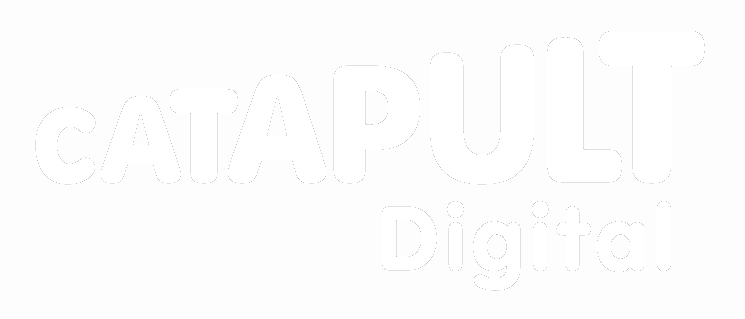User-Generated Content
Author: Amy Thomas
Illustration: Ilaria Urbinati
User-Generated Content (UGC) is any form of content, including text, images, videos, reviews etc., that is created by users and published on online platforms. Creation and dissemination of UGC is typically present on these online platforms, though the rules about what content may or may not be used are often unclear.
There are many different categories of UGC, each with different copyright implications. Copyright protects certain types of UGC, whilst also regulating how existing works can be reused lawfully in content such as remixes, mashups and memes. Online platforms play an indispensable role in offering new and creative interactive tools for creating and sharing this UGC, but also have responsibilities to mediate this through copyright enforcement mechanisms.
Original photography, film, audio, writing, etc.
Some types of UGC will in fact be copyright works. UK copyright law applies to all original literary, dramatic, musical and artistic works, and to sound recordings, films, broadcasts and the typographical arrangement of published editions. Because of this, copyright may apply to, for example, your original photography (including e.g. selfies), blog posts, Facebook posts, tweets, comments, videos on online platforms like YouTube or TikTok, and songs and sound recordings. Sometimes these types of works will be labelled as UGC, whereas they are in fact original works of authorship comparable to any other that benefits from copyright protection. So, if you create UGC that falls into one of the categories of protected works and can be considered ‘original’, then you are its author and automatically own copyright in it (see ‘Who owns UGC?’ below).
This means that, for example, if you draw a cartoon and upload it to Instagram, and a company sees this and wishes to use it in an advertising campaign, they would have to approach you first for permission and possibly payment.
Works that incorporate copyright content: remixes, mashups, memes, gameplay etc.
UGC commonly includes elements of other people’s pre-existing work. This pre-existing work may be adapted in some way, e.g. by remixing a famous song, adding some new text to a famous meme, duetting with someone on TikTok, or streaming your playthrough of a game on YouTube.
These types of UGC are more complicated in legal terms, and may, or may not be copyright infringement depending on a variety of circumstances surrounding their reuse. Some questions to consider:
- Is the amount of pre-existing work used substantial? Under UK copyright law, taking an insubstantial part of a copyright work without permission is allowed.
- Can the UGC benefit from a particular copyright exception? Exceptions allow you to use substantial parts of protected content for certain specific purposes, without having to get permission from the copyright owner. For example, remixes and mashups may be considered as pastiche. If you are playing a game to criticise its merits and demerits, this could be considered criticism or review. If the text you have added to a meme is intended to humourize the original image, this could be considered parody. All these types of use may be permitted by copyright exceptions.
- Is the pre-existing work in the public domain? For example, a remix of a musical composition by Mozart or Beethoven.
- Did the UGC copy a pre-existing idea rather than an expression? Copyright only protects the expression of ideas, not ideas themselves. For example, copying a meme format rather than copying the image itself (see e.g. adaptations of the ‘Galaxy Brain’ meme format’) may be allowed under this principle.
- Was the UGC made with permission from the original creator by a licence? For example, TikTok includes an automatic licence from every user to permit them to duet with or respond to another user’s video. Alternatively, some content may be made available under a Creative Commons licence, which usually gives generous permissions for reuse. Many games companies also give permission to users to stream their game content in their licence agreements and UGC policies. The ‘You Can Play’ digital resource offers easy-to-understand interpretations of the rules concerning the use of game content. Click on the image below to access the You Can Play digital resource.
Fan works
Fan works, such as fan art or fan fiction, are often based on characters, settings, or storylines from an existing work. For example, fan fiction may use famous characters from an existing fantasy novel but situate them in a different time period than their original setting, or reimagine them in new realities (e.g. the popular ‘coffee shop’ or ‘high school’ alternative universe genre).
Fan works exist in an area of substantial legal uncertainty in copyright law. Even if fan works do not replicate the entirety of an existing work, individual components of that work, like literary characters and/or their presentation in graphic works, may be protected by copyright. In this case, many fan works may be considered adaptations, which usually require permission from the author of the work being adapted. As such, there is a risk that fan works may include components that constitute copyright infringement. Other aspects, such as storylines or settings, may be considered an unprotectable idea rather than a protectable expression.
Whilst no specific copyright exception exists for fan works, some legal scholars have argued that they may benefit from the pastiche exception. This is because pastiche can be read to include works which imitate a style of pre-existing works or that incorporate elements or features of them, which may extend to characters or storylines. However, whether such a defence is viable has not yet been tested or proven in court.
Further, there is also legal uncertainty as to whether characters can be protected by UK copyright law at all. So, whether there is copyright infringement in certain fan works will depend on whether characters could, or could not, be protected by copyright.
In combination it is difficult to provide a conclusion on whether any and every instance of a fan work constitutes copyright infringement. However, there is some guidance which may assist in protecting yourself against copyright infringement claims:
- Seek permission from the original creator where possible. If this is not possible…
- Research the original creator. Lots of creators are explicit in expressing their wishes about fan content, and so a little research may reveal their level of tolerance for these activities. For example, Anne Rice and George R. R. Martin have been known to strongly discourage fan fiction of their works, whereas Stephenie Meyer and Neil Gaiman actively encourage it. Others will not object to most uses of their work but set conditions on how their characters can be used. For example, J. K. Rowling encourages most Harry Potter fan fiction, but objects to pornographic or racist iterations of her characters. It is worth remembering that any creator can object to fan works where they constitute derogatory treatment that is prejudicial to the creator’s honour or reputation.
- Check if an exception applies. Most fan works will be an offshoot of the original work, but if your fan work is making, for example, a parody of the original work, it may benefit from a copyright exception. As noted above, pastiche may also be a potential defence for some fan works.
- Use disclaimers to credit the original creator. Clearly state the work you have been inspired from and the original creator, for instance, ‘This is a work of [fan fiction/art] using [characters, settings, origin stories etc.] from the [original work name], created by [original author name]’.
- Be cautious about commercial exploitation. Fan works are usually tolerated so long as they are not being used to make profit. As such, you should be cautious about pay walling your fan fiction (e.g. through Patreon), offering fan art for commission, or selling your fan works at a convention, to give a few examples. Again, some original creators may have varying levels of tolerance for these activities. For example, Mojang (creators of Minecraft) will tolerate the sale of fan merchandise up to a certain price point.
Who owns UGC?
It is a common myth that when you upload UGC to an online platform, such as YouTube or Instagram, the platform will own the copyright over your work.
Usually, this is not the case. Instead, the terms you agree to when you access an online platform will typically (and automatically) include a licence to the platform for limited uses of your UGC. This licence normally gives the platform permission to copy, process, adapt, transmit and display your UGC across the world. This licence is mostly pragmatic, as the platform needs these limited permissions from you in order to show your UGC to other users. For example, the technical process of sending a photograph around a server from the UK to a user in Australia, necessarily includes copying, processing, adapting, transmitting, and displaying your UGC.
The licence you grant is normally royalty-free, meaning that the platform does not have to pay you anything in return for sharing your work. Nonetheless, you are still entitled to look elsewhere for payment from another party, as this licence is also normally non-exclusive. This means that the platform won’t prevent you from approaching another party and asking for payment for your UGC through a separate licence. For example, if you take a photograph and upload it to Instagram, this does not prevent you from approaching a marketing company and offering to license it to them in exchange for a fee. Instagram does not ‘own’ this picture, only a limited right to use it.
If in doubt about who owns what, check the terms of service of the platform where you are uploading your UGC.
What to do if you receive a copyright complaint about your UGC
Occasionally, a complaint may be made against your UGC if the original owner thinks that it infringes their copyright. On online platforms, this is normally called a takedown notice, takedown request, or occasionally a DMCA notice (referring to the relevant US legislation, the Digital Millennium Copyright Act). This is a form of copyright enforcement that may result in your content being removed, or de-monetised, if it receives any kind of advertisement revenue.
If you believe that your use of the pre-existing work is lawful (for any of the reasons stated above, for example, that it benefits from a copyright exception), or otherwise that the notice was submitted against your UGC in error, you may file a counter-notice. This consists of a form that you submit to the online platform. It may vary from site to site, see for example YouTube’s counter-notice process here. If your counter-notice is considered valid, the online platform will fully reinstate your content.
Summary
Nearly every user of an online platform will be a creator of UGC, and this continues to form a major part of life online. There is no one-size-fits-all rule when it comes to the legality of UGC, and instead there are many different types of content, with different copyright implications. Some types of UGC may benefit from copyright exceptions, whereas others, such as fan works, exist in a more legally grey area. It is also important to consider the rules of the platform where you create and share your UGC, and how it manages and enforces copyright complaints. This might involve checking their terms of service and being aware of their procedures for making and contesting copyright claims over your UGC.
Legal language:
Shazam v Only Fools The Dining Experience [2022] EWHC 1379 (IPEC)
After years of uncertainty, this case confirmed that fictional characters can be protected by copyright as discrete ‘literary works’ provided that: 1) the character is original subject-matter (meaning it’s the author’s own intellectual creation) and; 2) that the character must be identifiable with sufficient precision and clarity. The second aspect of this test suggests that ‘stock’ or ‘generic’ characters would not benefit from copyright protection.
Legal references:
The law on criticism and review in the United Kingdom is found in Section 30(1) and Schedule 2 (2) of the Copyright, Designs and Patent Act 1988, which you can read here:
https://www.legislation.gov.uk/ukpga/1988/48/section/30
https://www.legislation.gov.uk/ukpga/1988/48/schedule/2
The UK law on copying works for the purposes of caricature, parody or pastiche is set out in Section 30A and Schedule 2 (2A) of the Copyright, Designs and Patents Act 1988. You can read these provisions here:
https://www.legislation.gov.uk/ukpga/1988/48/section/30A
https://www.legislation.gov.uk/ukpga/1988/48/schedule/2
Digital Millennium Copyright Act (DMCA) Pub. L. 105 – 304 (US): https://www.copyright.gov/legislation/dmca.pdf
Hudson, E. (2017) The Pastiche Exception in Copyright Law: A Case of Mashed-Up Drafting? https://kclpure.kcl.ac.uk/portal/en/publications/the-pastiche-exception-in-copyright-law(f896cd27-9b7a-4353-bfe2-2264bb4f142b).html
Google, Submit a copyright counter notification: https://support.google.com/youtube/answer/2807684?hl=en-GB
Terms of Service; Didn’t Read: https://tosdr.org/
Twitter, Terms of Service: https://twitter.com/en/tos. See particularly the section on ‘Your Rights and Grant of Rights in the Content’:
By submitting, posting or displaying Content on or through the Services, you grant us a worldwide, non-exclusive, royalty-free license (with the right to sublicense) to use, copy, reproduce, process, adapt, modify, publish, transmit, display and distribute such Content in any and all media or distribution methods now known or later developed (for clarity, these rights include, for example, curating, transforming, and translating). This license authorizes us to make your Content available to the rest of the world and to let others do the same. You agree that this license includes the right for Twitter to provide, promote, and improve the Services and to make Content submitted to or through the Services available to other companies, organizations or individuals for the syndication, broadcast, distribution, Retweet, promotion or publication of such Content on other media and services, subject to our terms and conditions for such Content use. Such additional uses by Twitter, or other companies, organizations or individuals, is made with no compensation paid to you with respect to the Content that you submit, post, transmit or otherwise make available through the Services as the use of the Services by you is hereby agreed as being sufficient compensation for the Content and grant of rights herein.
You Can Play: https://www.copyrightevidence.org/ycp/overview. A digital resource that catalogues user-generated content policies for video games.
Related
Public Domain: Duration
This commentary explains how long copyright lasts and what you need to consider when calculating the copyright term of different types of works.
Quotation
There are two exceptions to be aware of, one specifically for criticism and review and a more general exception for quotation. Both exceptions apply to all types of copyright material…
Parody & Pastiche
Parody refers to a new creative work which uses an existing work for humour or mockery. Some parodies take aim at well-known artists or their work in order to make a critique.












